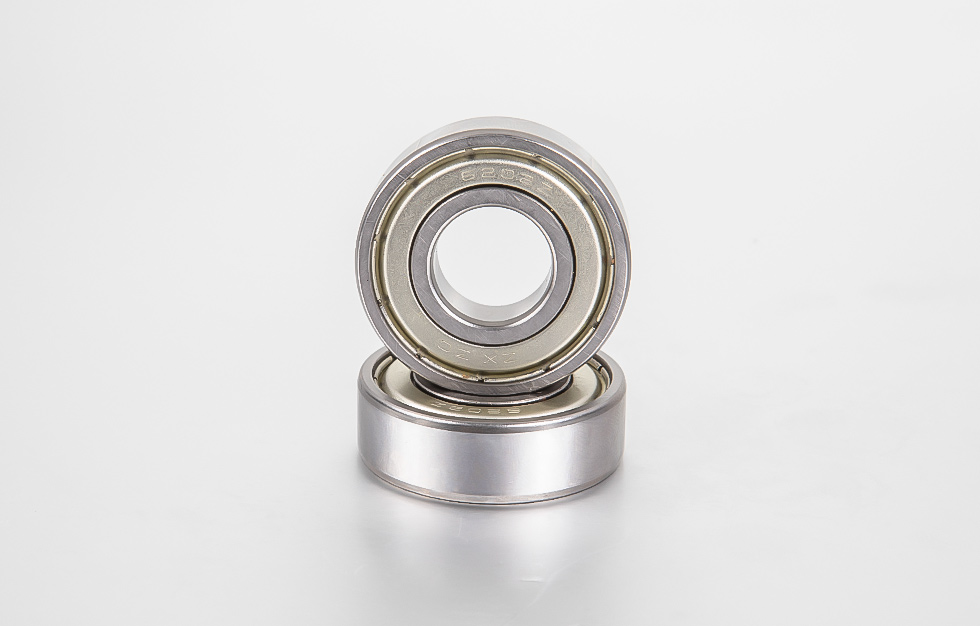News
Ningbo Hardchn bearing Co., Ltd.
Contact Us
Ningbo Hardchn bearing Co., Ltd.
ADD:No.501 Shizhu Rd, Linyu Foreign Investment Park, Jiaochuan Street, Zhenhai District, Ningbo city, China.
Tel:0086-574-86365365
Mobile:0086-(0)13858288142
Fax:0086-574-86454078
1. Active magnetic bearings Active magnetic bearings us […]
1. Active magnetic bearings
Active magnetic bearings use controllable electromagnetic force to suspend the shaft. It is mainly composed of rotor, electromagnet, sensor, controller and power amplifier. The electromagnet is installed on the stator, and the rotor is suspended in the magnetic field generated by the electromagnets placed symmetrically in the radial direction. Each electromagnet is equipped with one or more sensors to continuously monitor the position change of the rotating shaft. The signal output from the sensor, with the help of an electronic control system, corrects the current passing through the electromagnet, thereby controlling the attractive force of the electromagnet, so that the rotating shaft runs in a stable and balanced state and meets certain accuracy requirements. Figure 1 shows the components and working principle of an active magnetic bearing system. After the sensor detects the displacement of the rotor from the reference point, the microprocessor as the controller converts the detected displacement into a control signal, and then the power amplifier converts the control signal into a control current, which is generated in the actuator electromagnet The magnetic force thus enables the rotor to maintain its stable floating position. The stiffness, damping and stability of the suspension system are determined by the control system.
Active magnetic bearings can be divided into current control and voltage control according to different control methods, and can be divided into radial magnetic bearings and axial magnetic bearings according to different support methods. At present, among active magnetic bearings, the most widely used is DC controlled magnetic bearings.
The mechanical part of active magnetic bearings-generally consists of radial bearings and axial bearings, as shown in Figure 2. The radial bearing is composed of a stator (electromagnet) and a rotor; the axial bearing is composed of a stator (electromagnet) and a thrust plate. In order to overcome the eddy current loss, the stator and rotor (shaft journal part) collars are all laminated by punching sheets. The electromagnet of the radial bearing is similar to the stator structure of the motor, and the number of magnetic poles can be 8 poles, 16 poles or more.
Since active magnetic bearings have the advantages of rotor position, bearing stiffness and damping can be determined by the control system, active magnetic bearings have been the most widely used in the field of magnetic levitation applications, and the research of active magnetic bearings has always been the focus of magnetic levitation technology research. After years of hard work, its design theory and methods have become increasingly mature.

2. Passive magnetic bearings
Passive magnetic bearing, as a form of magnetic bearing, has its own unique advantages. It has small size, no power consumption, and simple structure. The biggest difference between passive magnetic bearings and active magnetic bearings is that the former does not have an active electronic control system, but uses the characteristics of the magnetic field itself to suspend the shaft. From the current point of view, in passive magnetic bearings, permanent magnetic bearings composed of permanent magnets are the most widely used. Permanent magnetic bearings can be divided into two types: repulsion type and suction type.
Passive permanent magnetic bearings can be used as radial bearings and thrust bearings (axial bearings) at the same time. Both types of bearings can be of suction or repulsion. Depending on the magnetization direction and relative position of the magnetic ring, permanent magnetic bearings have a variety of magnetic circuit structures. But its most basic structure has two kinds, as shown in Figure 3.
Permanent magnetic bearings can be composed of radial or axial magnetized rings. Rigidity and bearing capacity can be increased by superposing multiple pairs of magnetic rings. As shown in Figure 1-3a, when the magnetic ring 1 and the magnetic ring 2 are magnetized axially and assembled with the same polarity, they form a suction-type radial bearing, and when assembled according to the opposite polarity, they form a repulsive thrust bearing. As shown in Figure 3b, when the magnetic ring is axially magnetized and assembled according to the same polarity, it constitutes a repulsive radial bearing, and when assembled according to the opposite polarity, it constitutes a suction-type thrust bearing. If combined with radial magnetization, more structural forms can be formed.
Another type of passive magnetic bearing is based on suction, which acts between the magnetized soft magnetic parts, as shown in Figure 4. When the rotor parts move in the radial direction, the attraction effect comes from the change of magnetic resistance, so it is also called "reluctance bearing". This kind of bearing can be designed so that the permanent magnet part does not rotate, only the soft iron part rotates, so that the system has better stability.
Combining the stabilizing effects of reluctance bearings and active electromagnets can form a magnetic bearing system with minimal energy consumption.
For permanent magnetic bearings, when a certain load is applied to the shaft, the working air gap between the rotor and the stator ring will change. The repulsive force at the minimum working air gap is greater than the repulsive force at the maximum air gap, so that the shaft is radially The position changes and tends to balance. As mentioned earlier, it is impossible to obtain a stable balance only with permanent magnetic bearings, and it is unstable at least on one coordinate. Therefore, for a permanent magnetic bearing system, at least one direction must attract external forces (such as electromagnetic force, mechanical force, aerodynamic force, etc.) to achieve system stability.